Small-scale irrigation technologies are transforming the backyards of smallholder farmers. For this International Women’s Day, we see, through the eyes of three Ethiopian women, the potential of these technologies. More importantly, we gain insight into the key to making technology adoption work for women.
Amidst the patch-worked landscape of the Amhara region of Ethiopia, three women survey their backyard gardens. Sewagegn, Mulu and Alemitu have kept pace with the fluctuating seasons of garlic, green pepper and onions and their gardens reflect their efforts. Yet these gardens look different from the other backyards in the community. Behind each home sits a three-feet long solar panel, mulch covers the garden crops and irrigation drips slowly into the ground.
A technological transformation has slowly taken place on farms like these in Danghesta, with bundled interventions bringing sustainable solutions to smallholder irrigators. And across Africa, too, new solar powered pumps and other technology allow farmers to grow more and better food.
But these transformations bring both promises and risks. Can garden technologies actually improve women and household livelihoods? And if not, what is making technology miss its mark?
The promising potentials of small-scale irrigation technologies
So many interventions in one garden plot is not the norm for most irrigation schemes. In many cases, new technologies arrive but aren’t supported with the right farming practices and the monitoring of impacts on women and men farmers. This can unleash a range of unexpected consequences: depleted soils or groundwater, inequitable sharing of decision-making power and profits, or increased workloads.
But when interventions are bundled and gendered impacts are monitored, the solutions are more sustainable and can benefit entire households.
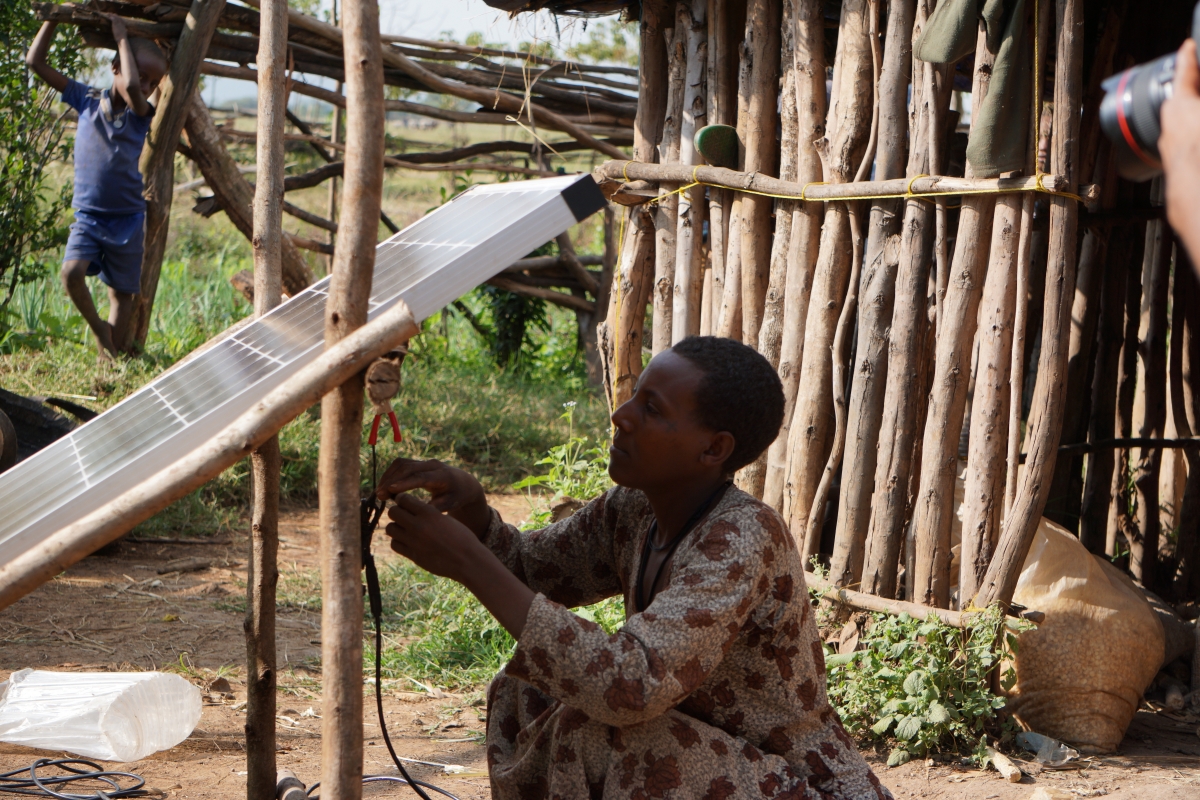
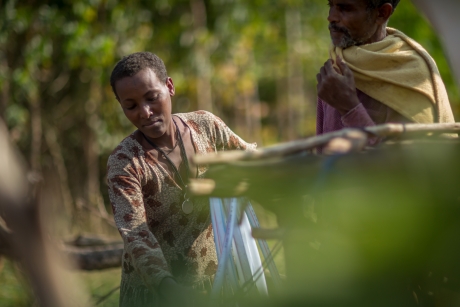
This is what’s happening in Danghesta. At first, technologies were individually tested for farmer suitability, but after years of learning, project partners including the CGIAR Research Program on Water, Land and Ecosystems,realized that there was an even better approach. Farmers are more likely to adopt technologies if they are able to take on a whole bundle that in combination makes farming both easier and more productive. For example, drip irrigation is too labor intensive if not combined with a pump, such as a solar-powered one.
Now, such technology bundles have been adopted in 50 Ethiopian kitchen gardens – gardens often managed by women who stay close to home while their husbands work in the fields.
Sewagegn lives in one such home in the Danghesta community. Her home is along a winding road through alternating patches of eucalyptus trees and maize fields. Fragrant greens - basil, Adam’s tears and kale - fill the edges of her garden. Just a couple meters from her back door sits a solar panel and a pump descending into the well. “This pump is my favorite,” says Sewagegn, a thought shared by the other ten solar powered pump users on the site. Previously, the women used water-lifting pulleys – backbreaking work. “This new pump is easy,” she tells us, “it frees up my time, which I then use for other home activities, such as cleaning the corn seed, harrowing and weeding.”
At first, other farmers viewed Sewagegn’s changes, such as adding mulch to her crops to reduce soil degradation, as strange. However, as time passed, the community began to see the yields of Sewagegn’s garden grow and her income increase.
“Finally, after one year,” explains a project staffer, “the community learned that mulching is very important for the land and for saving water. And one day, I see a new farmer with everything mulched.” The staff member chuckles at the rather enthusiastic change of heart in their neighbor. The altered perception reinforces more than just the obvious water efficiency benefits. Conservation agriculture also keeps key nutrients from washing away, making the resulting crops far more nutrient rich.
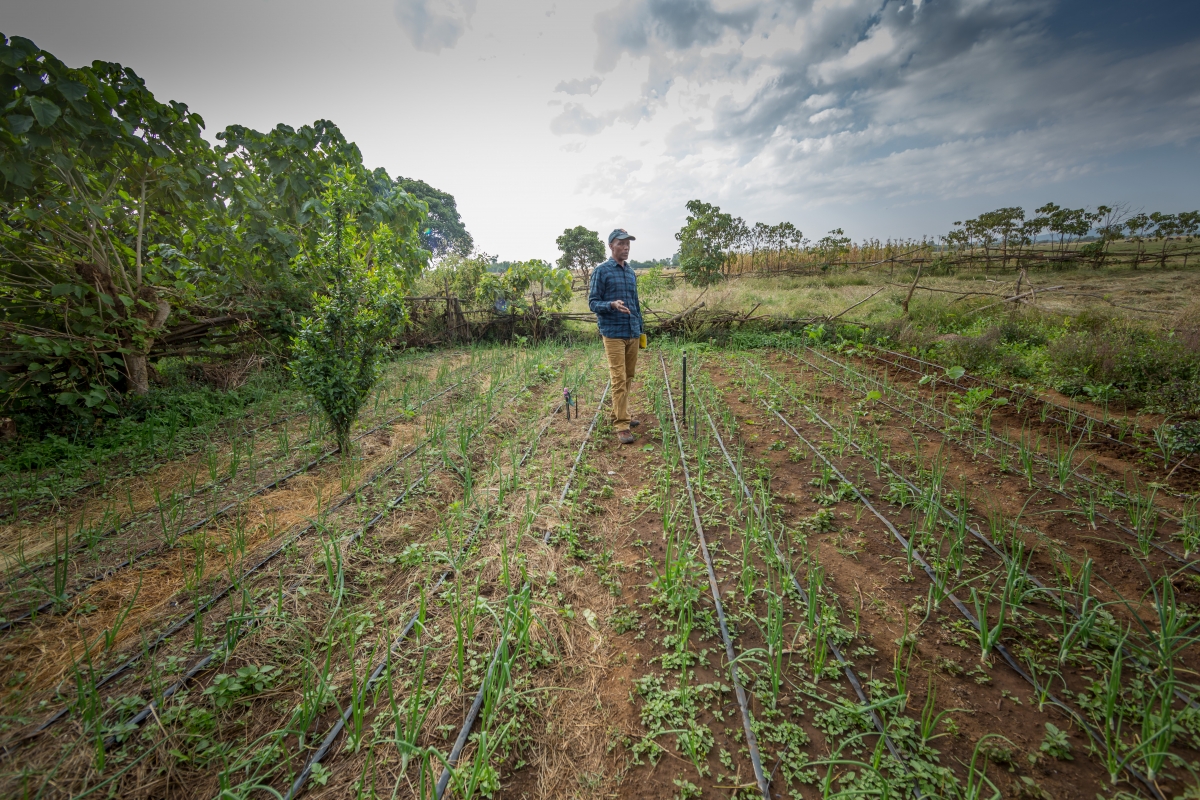
Other home plots have also seen improved crops and higher yields. Mulu, who lives further down the bumpy road in a home nestled in front of a field of maize, sits regally under the shade of a tree. She proudly tells us of her own plans to expand the garden and grow legumes for cattle fodder. The 5,500 Birr (194 USD) she earned by selling her green peppers helped her buy two sheep, sugar and salt for the holiday season.
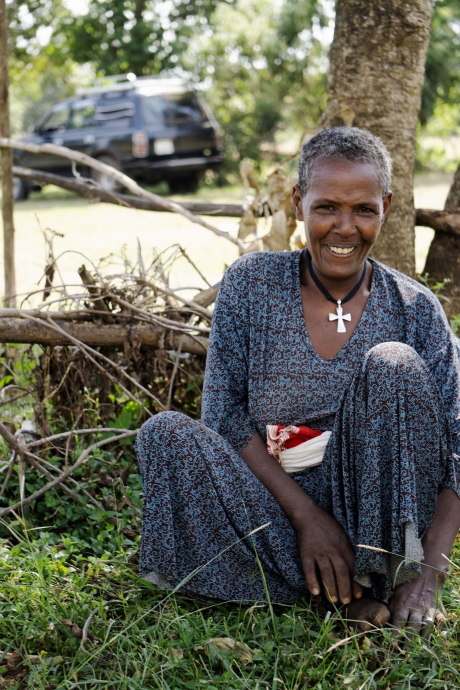
Mulu explains why the home garden produce, instead of maize from the fields, is so significant, “Previously, if I couldn’t sell the grain, the grain would remain on the land. But now, with these changes, I can sell my produce and can buy pens for school, soap, everything for my baby daughters... The children even support me in learning and using the technology – they are interested in helping and doing something like their mother.” The garden produce (all high value crops) are important in the dry season, providing an income during the times that maize does not grow.
Rethinking how we think about technology
These bundled technologies can help farmers produce more food, increase profit and reduce labor by more than 50 percent. Yet, we cannot assume this necessarily means that the lives of men and women farmers have been improved.
Alemitu, the final woman on the leafy dirt road, has one of the most successful plots in the site. But her life is incredibly busy – balancing the garden work, raising a family of six, caring for the cows and cooking injera. The solar pump greatly reduces her time collecting water, but the success of her plot demands time that she does not have.
In Alemitu’s case, context is key. Without the support of her older children and husband, Alemitu is hard-pressed to keep up with the success of her irrigated plot. Though her use of the technology is increasing yields and saving time, the overall management of the plot is demanding.

While such new technologies bring opportunities, they can also add more work to women’s already full schedules of household duties. This is why projects like this one continue to monitor interventions well after technology adoption. It is no longer sufficient to be content with just getting women and men farmers to use new technology; we also need to understand the change process and subtle nuances of its adoption and use.
Technology that lacks this continued monitoring and consideration of gendered constraints is missing the mark. It fails to catch outcomes that are household specific – such as an increase in labor in one house while a decrease in labor in another. When we do not understand the costs and the benefits – when we only focus on technology adoption– we are not actually achieving our goals of improving lives inclusively and sustainably.
Thus, these three women’s tales of profit and progress are significant. Bundled interventions benefit households. They save women time and improve nutrition. Just as important, their experiences remind us to look beyond technology as an end in itself. Instead, we need to consider the entire process of technology adoption, with continual monitoring for impacts on women and men farmers. In doing so, technology’s benefits can be longer lasting, more widespread, and more likely to ensure a resilient and food-secure future.
The above projects were led by the USAID Feed the Future funded Sustainable Intensification Laboratory (SIL), under the Innovation Lab for Small Scale Irrigation (ILSSI) through Kansas State University, is implemented by Bahir Dar University with support from Appropriate Scale Mechanization Consortium (ASMC), International Water Management Institute (IWMI), the CGIAR Research Program on Water, Land and Ecosystems.
Thrive blog is a space for independent thought and aims to stimulate discussion among sustainable agriculture researchers and the public. Blogs are facilitated by the CGIAR Research Program on Water, Land and Ecosystems (WLE) but reflect the opinions and information of the authors only and not necessarily those of WLE and its donors or partners. WLE and partners are supported by CGIAR Trust Fund Contributors, including ACIAR, DFID, DGIS, SDC, and others.



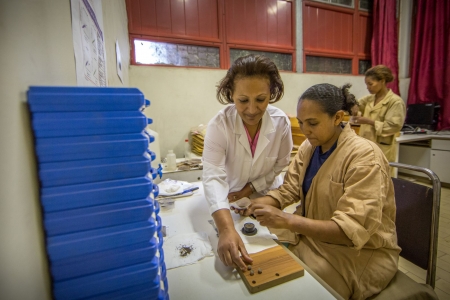
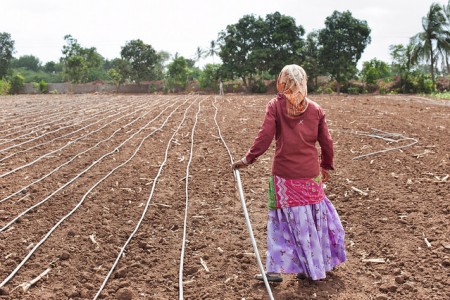


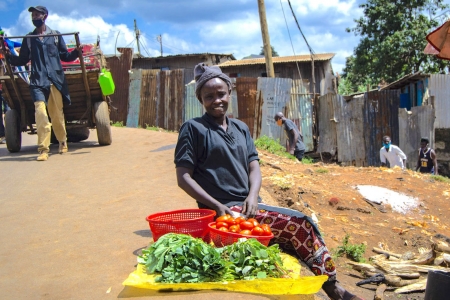




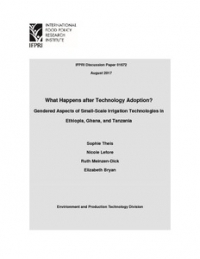
Comments
The pumps and CA are from an ASMC project under the Sustainable Intensification Lab led by Kansas State University. There is indirect link to SIPSIN and therefore WLE.
Was very pleased about the help it is to empower women in Africa.would the same kind of support for in my area Nyanga Zimbabwe.Kindly advice of the way of getting the assurance too for the women in my area as Zimbabwe is currently suffering from drought and political issues.
Adoption of technologies takes place only when the benefits ARE greater than the cost.